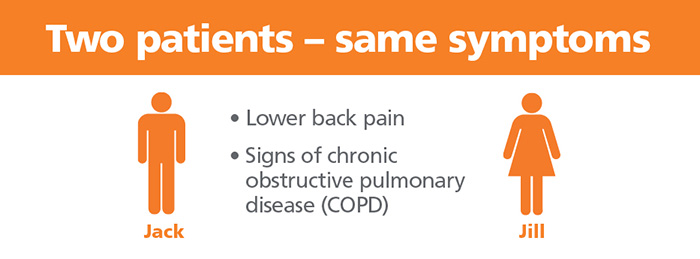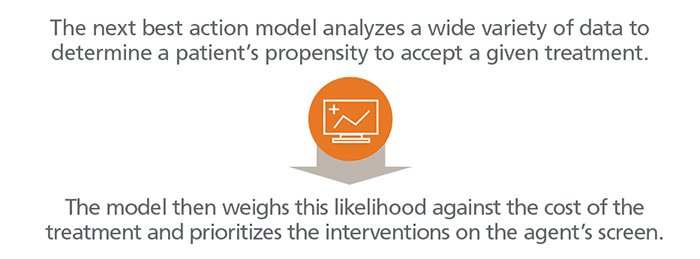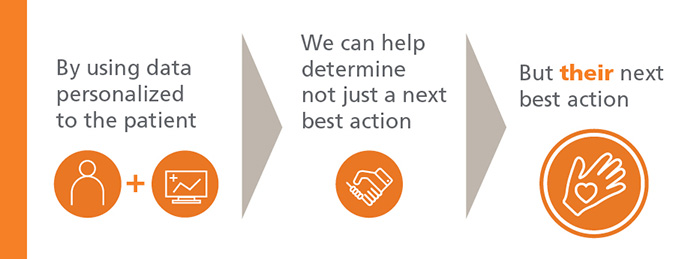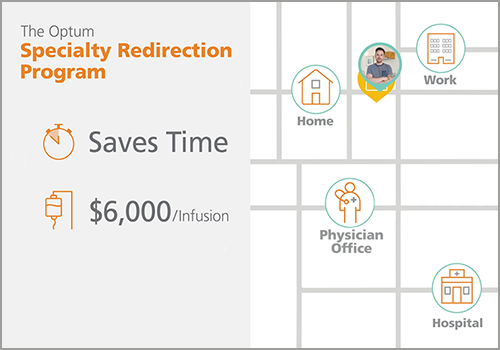The new model of personalized care
For a long time, the limitations of predictive analytic technology used in call centers meant that it wasn’t all that predictive of the needs of an individual caller. Agents would often struggle to reconcile the static information on their screens with the dynamic, real-world concerns of the customer on the other end of the phone.
Things have changed. Leveraging ongoing advances in analytics technology, OptumRx has worked to build custom predictive models which are not only faster but also more predictive at an individual member level. A prime example is our recommendation engine called Next Best Action, which enables call center agents to make actionable, data-driven decisions in near real time. Next Best Action is a precision intervention model optimized to ensure that each member touch point can be maximized to deliver higher levels of patient engagement and reduce medical costs. Moreover, we are continuously refining our underlying model inputs to make sure the health care options presented to each caller are dynamic and better prioritized on an individual level.

Here’s how Next Best Action works. When our members call their advocacy team for any reason, they interact with multi-disciplinary teams equipped with personalized insights into each member’s full health profile. After first addressing the member’s primary question or concern, the team uses this touch point to address other member-specific clinical and cost savings opportunities our system has identified. To achieve this personalized view, the Next Best Action model integrates individual attributes such as medical and pharmacy claims history, demographic information, and use of health/wellness programs, with an up-to-date, sophisticated set of clinical quality, best practice and economic rules.

To understand Next Best Action at a more granular level, one needs to look at its component parts. At its base is data — a lot of data. Given the very nature of our business, OptumRx stands astride a multidirectional flow of data originating from many sources including payers, members, providers and drug manufacturers. Unique among PBMs, OptumRx has created a unified data infrastructure capable of capturing, structuring and analyzing this data, enabling us to better understand and engage customers.
Getting a more nuanced, personalized view of the caller requires mining and synchronizing more extensive and unique types of data. As a result, our model now accounts for geographic, psychographic and demographic variables specific to each patient. Geographic data may inform a patient’s options if a specific procedure is expensive or hard to obtain in their area. Likewise, the model incorporates psychographic data, which includes values, attitudes, interests and personality traits, in order to get a more complete view of the patient. Elsewhere, demographic information such as age, gender, income and marital status will also help determine the appropriate course of care.
Blended together, these personalized pieces of information are then added to traditional risk scores, pharmacy claims and medical claims in order to calculate a member’s propensity to accept a certain treatment. This “propensity to accept” is then weighed against the known economic value of each treatment and a score is generated. The results are prioritized according to those scores and presented to the call center agent. Thus, when we receive a call, we intelligently route and determine an optimized course of care for a caller from over 300 types of opportunities. By using data personalized to the patient we can help determine not just a next best action, but their next best action.
Moreover, by positioning the options we predict members will choose first, we are also significantly increasing the odds that they will choose them. Put another way, the best interventions only work if people select and abide by them. Using consumer-specific predictive models in near real time enables us to optimize and prioritize the distribution of offers presented to the agent, and ensure better member engagement.
In the end, an engaged patient is a healthier patient, which translates into higher aggregate medical expense savings for clients. Internal analysis of our wellness telephonic programs indicates an average savings of $35.10 per eligible employee per year when propensity to accept data is used, opposed to $5.51 per employee when it is not used.
To learn more about how OptumRx is leveraging technology to enable personalized customer service, click here.






